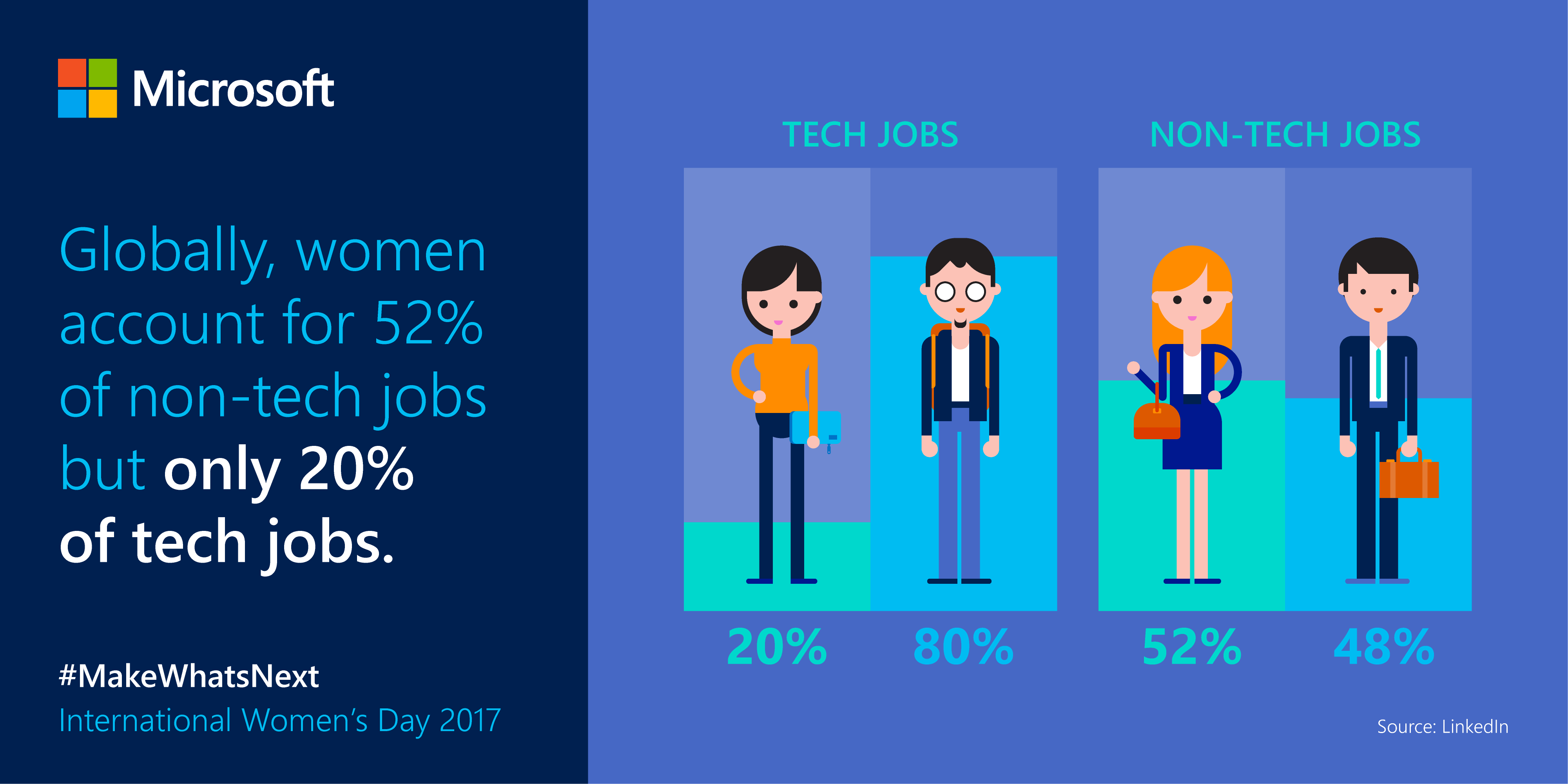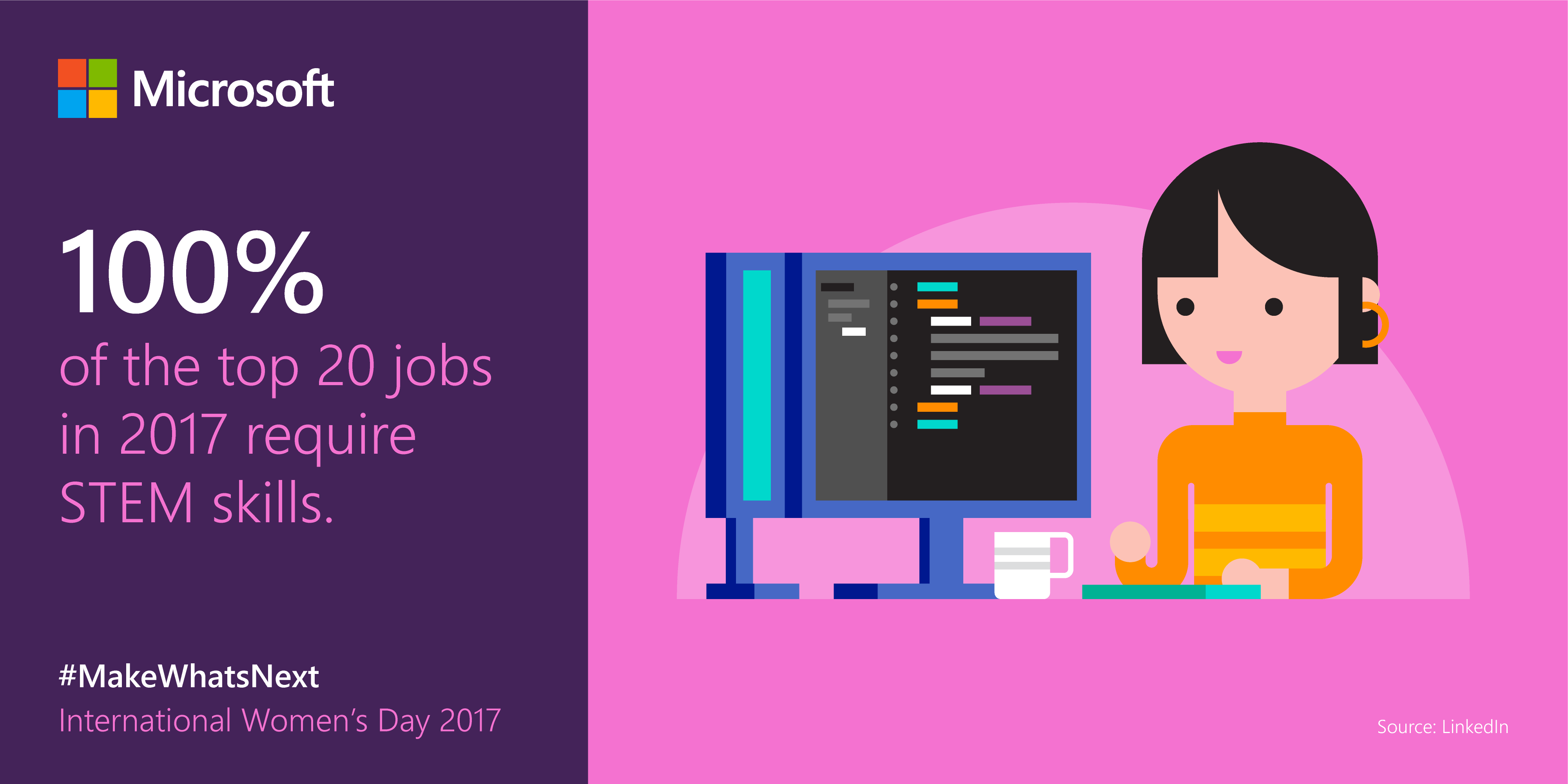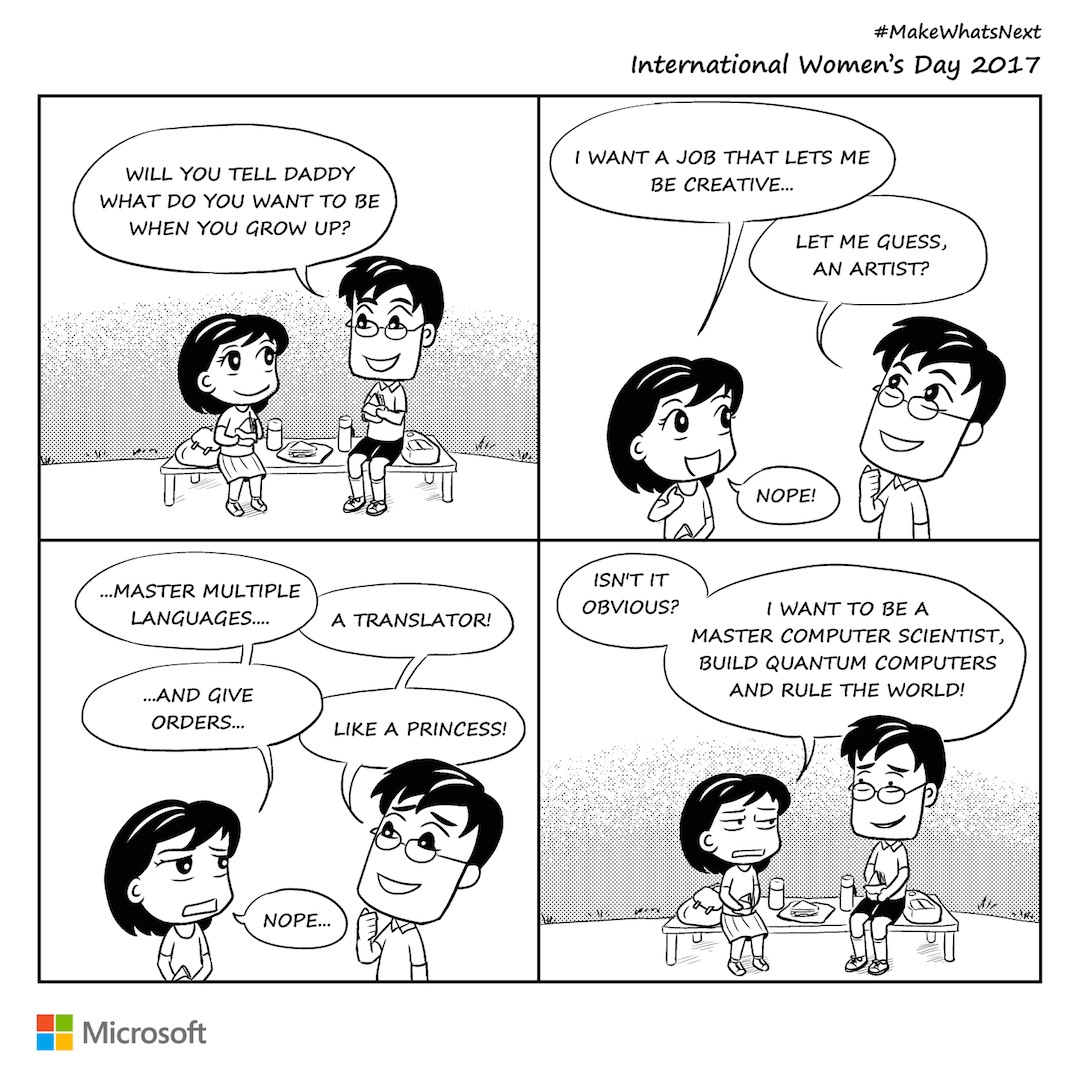We are entering into an era that is widely referred to as the 4th Industrial Revolution, where the development of new materials, as well as breakthroughs in the fields of genetic engineering and digital transformation are increasingly blurring the lines between the physical, biological and digital worlds.
With multiple industries being disrupted at the same time, those without relevant skills could be at risk of being made irrelevant in the workplace of the future. And the bad news is – women are likely to be disproportionately impacted, and in a negative way, according to a study by World Economic Forum. One key reason is, women are relatively under-represented in jobs that are expected to see the most growth in the next five years, such as those in in STEM (science, technology, engineering, mathematical) professions.
According to a list of Most Promising Jobs of 2017 published by LinkedIn, the top 20 occupations of the year require STEM skills. Despite the opportunities, there remains a persistent gender gap. The Agency for Science, Technology and Research (A*Star) estimates that nearly three in 10 research scientists and engineers in Singapore in 2014 were women, while a survey conducted by the Infocomm Development Authority of Singapore (IDA) showed a 30 percent female representation in tech companies here in Singapore.
What could be deterring more girls and young women from entering a field that offers the skills and knowledge that could change the world? Here are four common misperceptions that we seek to debunk on International Women’s Day 2017:
Myth #1: STEM education only matters at higher education levels.
In reality, STEM is an interdisciplinary approach towards educating students in four specific disciplines – science, technology, engineering and mathematics. Rather than teach them as separate subjects, STEM integrates them into a cohesive learning model based on real-world applications.[i]
Increasingly considered as a fundamental skill for basic education and a job, STEM also opens the door to higher education and exciting jobs. A path in STEM could pave the way for young women to pursue a wide spectrum of degree fields, including Computer Science, Artificial Intelligence (AI), Solar Energy Technology and Robotics Technology.[ii]
On a more fundamental level, learning STEM subjects provides critical thinking and problem-solving skills that will be needed across all jobs in future. A 2015 survey conducted by Microsoft revealed that a high proportion of both boys (79 percent) and girls (74 percent) in Singapore want to learn more about coding even though it is commonly regarded as a male-dominated field. While there is a high level of interest among young women in STEM, more needs to be done to encourage them to pursue a path in STEM.
Myth #2: STEM skills are only useful for STEM jobs.
In a technology-driven world, a vast majority of jobs require STEM skills in one form or another. Globally, companies and organisations are also evolving the way they operate and do business. Part of that evolution involves recruiting key talent – men and women with the mental agility to help businesses succeed.
For girls and young women pursuing a path in STEM, the critical thinking and problem-solving skills developed will be highly sought after in the economy of the future. In fact, the World Economic Forum estimates that a third of future jobs across all industries will require problem-solving skills. Armed with fresh perspectives, new ideas and complex problem-solving skills, women are set to drive change in big ways.
Myth #3: STEM is boring and doesn’t involve creativity.
In a Mastercard survey of approximately 1,500 girls from across the Asia Pacific region between 12 and 19 years of age, 84 percent indicated creativity as a desirable trait but only 43 percent associated girls in STEM with this quality.[i]
In reality, creativity and problem-solving skills are integral to a successful career in STEM. Dona Sarkar is an excellent example.[ii] The newly-appointed leader of the Windows Insider Program, Microsoft’s global beta program involving millions of members who receive and give feedback on early builds of Windows, Sarkar has come a long way since starting as a software engineer working on the Windows team more than a decade ago.
For her, coming up with creative solutions that enrich and improve people’s lives is central to her work and she believes that technology or, more specifically, operating systems provide the means to create anything. Sarkar is also the one who worked with her team to create Microsoft HoloLens, the first self-contained, holographic computer.
True to form, she wears multiple creative hats even in her personal life where she is a published author of four books, a fashion blogger and an aspiring fashion designer. Whether she is coding or sketching designs by hand, creativity is an intrinsic part of everything she does.
Myth #4: Men are more likely to succeed in STEM fields than women.
Unfortunately, gender stereotypes exist and perpetuate even in the modern world today. With access to the right technology, education and opportunities, women have the power to challenge perceptions and chart new paths into the future.
According to the recent MasterCard Girls in Tech Study, young women in Singapore cited scholarships, successful women in STEM as role models, and greater support from schools and institutions as the top three motivators that would encourage them to pursue STEM careers.
With examples such as these 10 inspiring women featuring the likes of Ada Lovelace, Grace Hopper and more helping to transform the world by pioneering technologies that many of us find hard to live without today, there is no better time than now to celebrate the incredible potential of women and girls to make an exponential impact in the world.
Through initiatives that provide support and opportunities in computer science and technology, we hope to inspire girls with courage and a huge dose of creativity to go beyond prescribed boundaries to #MakeWhatsNext, today.
For more inspiration, we released a new video to challenge young women to stay in STEM so they are empowered to solve the problems they care about most. Additionally, Microsoft and LinkedIn launched a new Career Explorer tool in conjunction with International Women’s Day to demonstrate how young women can pursue their passions with STEM skills across industries and social causes.
[i] Mastercard “Girls in Tech” research http://newsroom.mastercard.com/asia-pacific/press-releases/parents-are-crucial-influencers-for-girls-pursuing-stem-careers/
[ii] https://news.microsoft.com/stories/people/dona-sarkar.html
[i] http://www.livescience.com/43296-what-is-stem-education.html
[ii] https://www.ice.gov/sites/default/files/documents/Document/2016/stem-list.pdf



